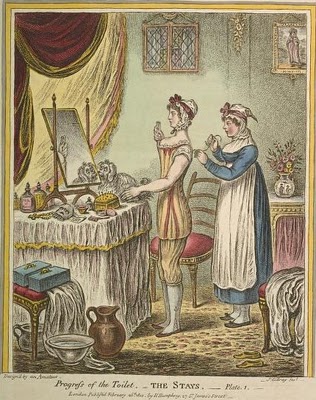This year, I’ve proposed a roundtable for ASECS 2015 on “Queer
Vision(s)”:
Eighteenth-century plays, novels, memoirs and even art
and poetry are often concerned with what we know and how we know it. Vision
plays a key role in defining and understanding knowledge in this period,
especially with regard to knowledge of the gender and sexuality of
eighteenth-century persons and characters. Consider the moment in which Fanny
Hill looks through the peep hole and watches two young men engaging in a
homosexual act only to fall over and faint before she can report them, or how
actresses in breeches roles were admired and desired by both men and women for
the spectacle they provided on stage. This roundtable solicits papers that will
examine the various ways in which vision is queered in the eighteenth-century
as well as how vision and the ability to see “queerly” affects who or what is
understood to be “queer.”
In the spirit of shameless plugging, I’ve decided to
dedicate a whole blog post to the topic in the hopes of promoting the
roundtable. I’m hoping to get a really great discussion going at ASECS on the
intersections of desire, perception and sexuality. These issues are, after all,
deeply tied together.
My own research on female cross-dressers led me to the
idea of “queer vision.” So often, the bodies of these women would give them away.
A flash of boob, for example, and the jig was up—or was it? In Henry Fielding’s
The Female Husband, Mary Hamilton’s
breasts are exposed at a town dance—yet she retains her male disguise.
According to Fielding’s narrator, the Doctor (Hamilton) enters into a dispute
with a man at a local dance where she has been wooing her newest conquest, Mary
Price. During the scuffle, the man “tore open her [Hamilton’s] wastecoat, and
rent her shirt, so that all her breast was discovered, which, tho’ beyond
expression beautiful in a woman, were of so different a kind from the bosom of
a man, that the married women there set up a great titter” (46-47).
How Hamilton hides her superlatively perfect breasts in
the guise of a man is left to the imagination of the reader. According to our
narrator, “it did not bring the Doctor’s sex into an absolute suspicion, yet
caused some whispers, which might have spoiled the match with a less innocent
and less enamoured virgin” (47). It seems that Mary can only see what she wants
to see; Fielding, by contrast, is coy as to what exactly he wants his readers
to see: do we see Hamilton as a villain? a rake? a misguided criminal weirdo? a
beautiful and attractive female husband?
The issue of perception and desire, however, is not
limited to issues of cross-dressing or same-sex desires. These same issues play
out in various ways on the eighteenth-century stage and in novels where
concerns about disguise, class fluidity, “passing,” and masquerade show up
again and again. For example, how could Clarissa not “see” Lovelace for what he was? Or
could see it, but still desire him despite it?
It seems, perhaps, that despite innovations in visual
technology, such as the microscope and the telescope, eighteenth-century
writers were still quite concerned with how
to see others, and how these various queer visions affect how others see us
and whom we desire. The purpose of this roundtable will be to take a look at
these issues from a variety of perspectives and through a variety of texts and
artefacts. Artists as well as writers explored the notion of vision and desire
in visual media such as paintings and cartoons. Other studies in material
culture, such as costume studies, might also make some interesting
interventions into this discussion.
For more info on submitting a proposal, go to the CFP.
Paper proposals are due by Sept. 15, 2014.
For more on boobs, see my article on Maria Edgeworth's Belinda.

No comments:
Post a Comment